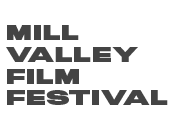MEET THE FILMMAKER
KATE BROOKS, THE LAST ANIMALS
In 2010, following a photography mission with a medevac unit at Kandahar Airfield in Afghanistan, Kate Brooks went on a long-panned vacation to Kenya. “It was in the Maasai Mara that I was able to heal from some of the inhumanity I had witnessed: countless troops and Afghan civilians having their limbs blown off by IEDs and Afghan children being erroneously bombed by coalition forces,” Brooks said.
It was also in Kenya that she saw a herd of elephants moving across the plain. Seeing them, she said, was both calming and uplifting. “[Seeing the elephants] for the first time reminded me that in spite of all the human destruction on the planet, there is still some natural order, which ultimately lead me to want to protect it.”
A couple years later, after being named a Ford Environment, Transportation and Technology Fellow for the Knight Wallace Fellowship, Brooks began seeing stories trickling in about the poaching crisis in Africa. “When I learned of an elephant massacre on the border of Chad in which over 80 elephants were gunned down, I felt I had no choice but to pick up my cameras to help bring attention to the crisis,” she said.
Moving away from photojournalism and picking up a film camera wasn’t entirely new – she was cinematographer on the film The Boxing Girls of Kabul – but The Last Animals is Brooks’ directorial debut.
“Documentary filmmaking is immersive, emotional and educational,” she said.
“Part of the reason I decided to do The Last Animals as a film rather than a photo project is that I wanted to give people a voice to express themselves. Motion picture allows for the photographer in me to record the same photographic images as I would through stills, but it’s more dynamic.”
She began by cold-calling and interviewing people, attending conferences and educating herself on the conservation world. Once she entered Garamba National Park in the Democratic Republic of the Congo, where much of the film is shot, she met rangers and military on the ground.
Though Brooks is no stranger to dangerous situations, being responsible for a film presented new challenges. “Going into potentially dangerous situations, the sense of responsibility was heavy,” she recalled. “I hated having to ask my crew to fill out beneficiary forms and life insurance policies. I always felt a sense of relief when leaving Garamba – knowing that the crew was safe – but was also sad to leave.”
While the violence waged against animals in the name of the ivory trade is horrific, Brooks hopes that her film will help spark change. “My greatest hope is that the film will help close the remaining legal ivory markets and lead to stronger anti-trafficking laws… A lot is happening around the world right now in regards to closing the remaining ivory markets. Hong Kong is in the process of reviewing its proposed ivory trade ban, the European Union is currently conducting a consultation period on its policies on ivory exports from the EU, as well as examining legislation on trade within the EU. Hopefully the UK will be embarking on its own consultation period before long as well. Our website is increasingly providing ways for people to support local and international trade and market bans in the “Get Involved” section on our website. It’s very important that we as global citizens use this time and these opportunities wisely – to collectively end the trade of ivory.”
The ivory trade is a global network, and even people in Marin, CA can help to support or block its development. “California was the third state to ban ivory but last year there was a motion to overturn the ban, which thankfully did not pass,” Brooks said. “Over the summer a tiger cub was seized being smuggled into the country through California and is now at San Diego Zoo being reared. There is a woman facing charges for selling ivory and rhino horn at a San Mateo gem show. These are just a couple of examples of wildlife violations in the state of California. This is a global problem and it’s going to require global and local effort to ensure there is a place on the planet for nonhuman species.”
Please consider exploring these incredible organizations and initiatives, including WCS, 96 Elephants and WildAid, which will participate on the Active Cinema Panel with filmmaker Kate Brooks:
https://www.wcs.org/96-elephants
https://eia-international.org/
https://wildnet.org/wildlife-programs/elephant-crisis-fund
https://www.african-parks.org/the-parks/garamba
https://institute.sandiegozoo.org/who-we-are/mission-purpose
www.sheldrickwildlifetrust.org
Kate Brooks will attend the screening at the Sequoia in Mill Valley on Sunday, Oct 8 at 3:00pm. She will remain after the film to participate in a Q&A with the audience and Festival Programmers.




